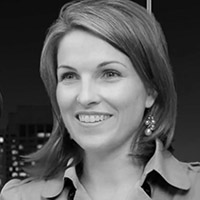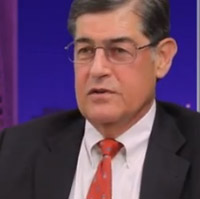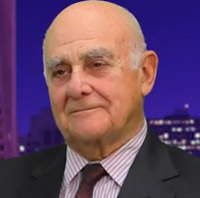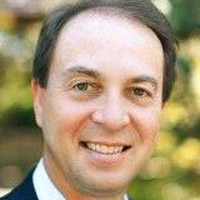“C” Corporation versus “S” Corporation Entity Selection Decision

Your “C” corporation versus “S” corporation entity selection decision is often step one when starting a company.
This comes up very often. How do we decide on whether to be a “C” Corporation or an “S” Corporation? You might also want to operate as a Limited Liability Company which is much like an S Corporation.
This is a description of the nightmare scenario with C corporations:
Which leads to the downside of selling assets in a C corporation, there are no favorable capital gains rates for C corporations. Thus, a corporation selling appreciated assets, even if a capital gain is generated, will pay corporate level tax at the marginal corporate rate, which quickly reaches 34% (35% for income in excess of $10 million).
If the cash is then distributed in liquidation, the shareholder(s) will have another taxable event measured by the amounts received in liquidation less the tax basis in the shares. (From Ron: at an additional 15% under current federal law of the after-corporate tax dividend.) This second level of tax on corporate distributions is why C corporations are said to be “double taxed”. State taxes must also be considered.
Often
The Buyer of a company will refuse to purchase the stock of your corporation because they don’t want to acquire any undisclosed corporate liabilities. So the Buyer will demand you sell the corporation’s assets, not stock.
With an S Corporation, there is only one level of tax, at the shareholder level, which is currently at a 15% long-term capital gains tax rate.
Example with a C Corp:
$1,000,000 gain on sale of Intellectual Property Assets by C Corp.
$1,000,000
– 340,000 (Tax at 34%) Federal
– 60,000 (Tax at 6.0% effective rate for California after federal deduction for state tax)
$ 600,000 After corporate tax cash distributed to shareholder in liquidation of C Corp.
– 126,000 Tax on shareholder on dividend (15% Federal and effectively 6% for California)
$ 474,000 Remaining cash after all federal taxes.
Total Tax: $526,000 = to 52.6% tax rate.
Example with an S Corp.:
$1,000,000 (No corporate level federal Tax)
-$ 15,000 (California S Corp tax of 1.5%)
$ 985,000 After Corporate Tax Cash to Shareholder
-$ 206,850 (15% Federal and about effectively 6% California Tax to Shareholder)
$ 778,150 Net Final after tax cash to the shareholder.
Total Tax: $221,850 = to 22.18% tax rate.
“C” Corp tax greater than S corp Tax: $526,000 -$221,850 = $304,150 Tax Savings on a $1m gain… Missing this is a tragic tax planning mistake.
Sometimes, to a limited extent, this can be fixed by paying a big bonus to the shareholder out of the “C” corp that is only taxed once…but that is a last resort and the IRS won’t let the bonus be too big.
Moral: Try never to put appreciating assets in a “C” corp.
Sometimes you have to be a “C” corporation because you plan on going “public” soon, but otherwise, a “C” corporation is to be avoided lacking another very good reason.
Please give us a call if you have any questions or comments.
We hope you found this article about “”C” Corporation versus “S” Corporation Entity Selection Decision” helpful. If you have questions or need expert tax or family office advice that’s refreshingly objective (we never sell investments), please contact us or visit our Family office page or our website at www.GROCO.com. Unfortunately, we no longer give advice to other tax professionals gratis.
To receive our free newsletter, contact us here.
Subscribe our YouTube Channel for more updates.

Alan Olsen, is the Host of the American Dreams Show and the Managing Partner of GROCO.com. GROCO is a premier family office and tax advisory firm located in the San Francisco Bay area serving clients all over the world.
Alan L. Olsen, CPA, Wikipedia Bio

GROCO.com is a proud sponsor of The American Dreams Show.

The American Dreams show was the brainchild of Alan Olsen, CPA, MBA. It was originally created to fill a specific need; often inexperienced entrepreneurs lacked basic information about raising capital and how to successfully start a business. Alan sincerely wanted to respond to the many requests from aspiring entrepreneurs asking for the information and introductions they needed. But he had to find a way to help in which his venture capital clients and friends would not mind.
The American Dreams show became the solution, first as a radio show and now with YouTube videos as well. Always respectful of interview guest’s time, he’s able to give access to individuals information and inspiration previously inaccessible to the first-time entrepreneurs who need it most. They can listen to venture capitalists and successful business people explain first-hand, how they got to where they are, how to start a company, how to overcome challenges, how they see the future evolving, opportunities, work-life balance and so much more..
American Dreams discusses many topics from some of the world’s most successful individuals about their secrets to life’s success. Topics from guest have included:
Creating purpose in life / Building a foundation for their life / Solving problems / Finding fulfillment through philanthropy and service / Becoming self-reliant / Enhancing effective leadership / Balancing family and work…

MyPaths.com (Also sponsored by GROCO) provides free access to content and world-class entrepreneurs, influencers and thought leaders’ personal success stories. To help you find your path in life to true, sustainable success & happiness. It’s mission statement:
In an increasingly complex and difficult world, we hope to help you find your personal path in life and build a strong foundation by learning how others found success and happiness. True and sustainable success and happiness are different for each one of us but possible, often despite significant challenges. Our mission at MyPaths.com is to provide resources and firsthand accounts of how others found their paths in life, so you can do the same.
Money Habits | Megan Lathrop
Episode Transcript of: Money Habits | Megan Lathrop Alan Welcome back. We’re here today with Megan Lathrop. She’s a money coach, certified financial planner, and also an author. Megan, welcome in today’s show. Thank you. So thinking, give us some of your background. How did you get to where you are today? Megan Sure,…
Succession Planning | Cameron Carlson
Episode Transcript of: Succession Planning | Cameron Carlson Alan Welcome back. We have with us today, Cam Carlson. He is the president of Carlson Hammann, a consulting firm specializing in succession planning and exit strategies. Ken, welcome to today’s show. Cameron Thank you, Alan. It’s good to be here. Alan So give me some background…
Lessons of Life | Dick Buxton
Episode Transcript of: Lessons of Life | Dick Buxton Alan Welcome back. I’m sitting here today with Dick Buxton. Vic has a prolific career playing a role in helping several 1000s or hundreds of 1000s of over 1000 companies with the succession planning with the Aesop’s and he’s also prolific writer and has done much…
Golden State Warriors Owner | Joe Lacob
About Joe Lacob Lacob’s NBA and professional sports experience dates back over two decades, including a five-year tenure as a minority owner of the Boston Celtics, where he served on the basketball committee. He earned an NBA World Championship ring with the storied franchise before selling his minority stake and making an NBA record-setting…




